Restoration of landmark of Yorkshire railway history reaches great heights
Published
09 Jun 2023
Crigglestone Viaduct is around three miles south-west of Wakefield. It carries the track bed of the former Royston to Dewsbury railway line, which opened in around 1900
Share this article
Standing over a West Yorkshire village and woodland at more than 80 feet high, an historic railway viaduct once part of the Midland Railway has undergone a major programme of maintenance and restoration by National Highways.
Dating back to 1906, the 21-arch Crigglestone Viaduct is being handed a new lease of life to ensure it is kept safe for generations to come. The bridge is one of more than 3,000 former railway structures maintained by the Historical Railways Estate (HRE) team on behalf of owners, the Department for Transport.
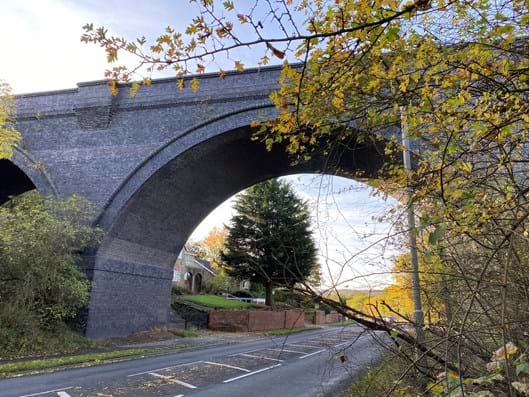
View of Crigglestone Viaduct from Denby Dale Road
HRE Civil Engineer Muhammad Musa said “This is a hugely important project and we’re really proud of the hard work that the engineers have done to restore this piece of local history.”
A team of engineers has been carrying out the work on the ground as well as within and above the colossal arches, fastened to sturdy ropes and suspended from the top of the mighty structure. They have been:
- Carrying out repairs and refurbishment including fixing fractures and repointing brickwork
- Strengthening parts of the structure following damage caused by excessive vegetation and
- Removing vegetation and graffiti
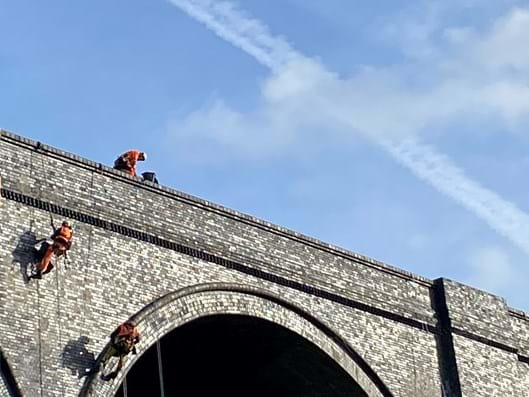
The team at work on the 80-feet high structure
While this work has taken place, National Highways has also worked closely with ecologists to protect bats roosting in the structure, with six new bat boxes installed.
"Among the most important aspects of this work has been working to protect the viaduct from excessive vegetation, while at the same time respecting nature and the environment, Muhammad said. “Among our biggest tasks has been removing vegetation from the inside face of the south parapet. There has been excessive growth here, with roots embedded between the mortar joints. This created deep open joints in the brickwork, with remaining mortar made more fragile and breakable. Tree root growth also caused areas of brickwork to become displaced. Damage from excessive tree growth is common on our structures, so it’s important we carry out regular clearance to maintain these structures for future generations.”
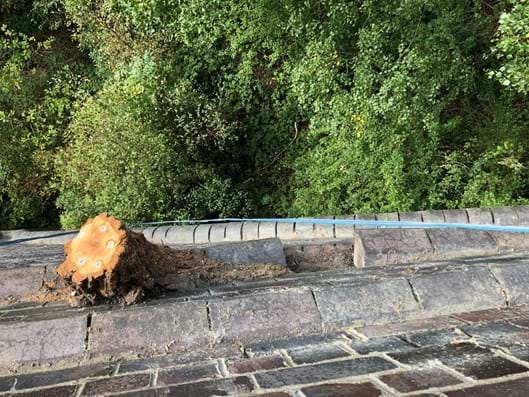
A tree growing from the structure has been cut back
Graffiti has also been cleaned off the inside of the parapets and the pier bases. Some bricks have been removed and replaced and fractures around parts of the deck are being repaired.
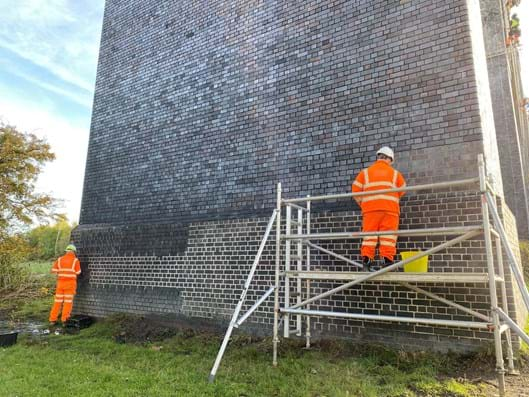
Repointing work under the bridge
The programme continues on the viaduct, with work over the railway span expected to complete in late September.
HRE is working closely with contractors from Jacobs, AmcoGiffen and ALPS to restore the structure, which, end-to-end, spans a whopping 1,270 feet.
The viaduct is one of 356 structures (11% of the HRE estate) in Yorkshire and the North East, with 35 schemes in the region completed during the last financial year.
Work completed recently includes masonry repairs and repointing at the disused Mindrum Viaduct which sits on the former Cornhill Railway line in Northumberland, opened in 1887. New fencing and signs were also installed after rubbish had been removed from the site.
Also, sitting on the former Hexham and Allendale Railway line which opened in 1876 sits the Westwood Bridge where a variety of maintenance work was recently undertaken; including repairing a number of fractures, replacing fencing and a handrail, repointing work and vegetation clearance.
National Highways HRE Head of Programme, Helene Rossiter, said:
“We take our responsibility for the HRE very seriously and all our structures are inspected yearly by a team of specialist engineers. This allows us to plan work well in advance and ensure that the most critical tasks are prioritised.”
Crigglestone Viaduct
Crigglestone Viaduct, also known as the Midland Railway viaduct at Calder Grove, was built in the early 20th century as part of the planned Sheffield-Bradford route. This route was never completed.
Crigglestone Viaduct is around three miles south-west of Wakefield. It carries the track bed of the former Royston to Dewsbury railway line, which opened in around 1900.
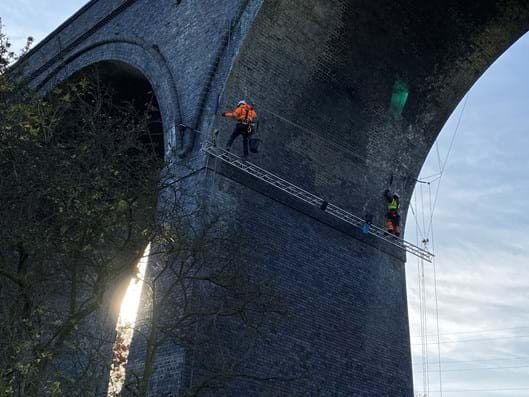
Working under the arches
Under the most easterly arch of the viaduct is the Wakefield-Barnsley railway line. Under the central section was Pepper's Yard British Oak site and the line serving the old Flockton Collieries which extracted coal from the easy-to-access seams in the area. Also in the viaduct’s shadow was the former Horbury West curve, known as Crigglestone curve, a section of railway running from Crigglestone Junction to Horbury Station Junction. This section opened in 1902.
Having closed to passengers in 1961, the Crigglestone curve was used by freight services until its disconnection at both ends in early 1991.
